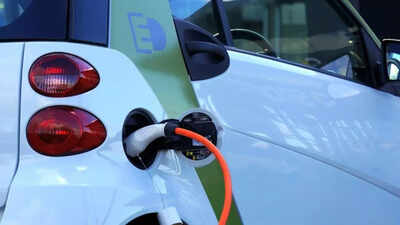🇮🇳 Government Incentives for Electric Vehicles in India

1. Central Schemes You Should Know
🏁 PM E‑DRIVE (2024–26)
Successor to FAME-II, with a revised allocation of approximately ₹10,900 cr.
Now the primary demand‑incentive scheme for EVs — including e‑2Ws, e‑3Ws, e‑4Ws, buses, and even electric trucks.
Offers:
₹5,000/kWh subsidy for e‑2Ws & e‑3Ws in FY 2024–25 (and ₹2,500/kWh in FY 2025–26), capped at 15% of ex-factory cost.
Up to ₹9.6 lakh per electric truck subsidy under a dedicated component of the scheme
⚡ GST & Tax Reliefs
GST on EVs and charging equipment maintained at a low 5%, significantly lower than 12–28% on ICE vehicles and accessories
Eligible buyers can claim up to ₹1.5 lakh interest deduction on EV loans under Section 80EEB
🧪 PLI & ACC Battery Support
Indian PLI schemes include:
₹26,000 crore scheme for electric vehicle manufacturing
₹18,100 crore scheme for advanced battery (ACC) production
These raise domestic EV manufacturing and reduce import dependence .
🌐 FAME III Preview
Set to replace FAME-II, targeting ₹15,000 crore funding between 2025–30
Focus on EV adoption for private & public fleets, grid charging infrastructure, and battery swap networks
2. Top State-backed Incentives Across India
Buying an EV? Stack your benefits with state-level schemes that stack on top of national incentives:
| State | Subsidies & Benefits |
|---|---|
| Delhi | Up to ₹10,000/kWh subsidy; road tax & registration waived; policy extended till Mar 2026 EV Mechanica+10evunplugged.com+10pspowers.com+10 |
| Maharashtra | Up to ₹1.5 lakh subsidy for cars; road tax exemption; early adopter bonuses evunplugged.comgodigit.com |
| Uttar Pradesh | ₹5,000 for 2Ws, ₹1 lakh for 4Ws, ₹20 lakh for e‑buses; 100% tax waiver; massive infrastructure rollout EV MechanicaWikipedia |
| Gujarat | ₹20k per e‑2W, ₹50k per e‑3W, ₹1.5 lakh per e‑4W; 50% tax rebate; infrastructure incentives godigit.comEV Mechanica |
| Telangana | 100% road tax and registration exemption until Dec 2026; boosting EV adoption past 2 lakh vehicles recently godigit.comThe Times of India |
| Tamil Nadu, Kerala, Karnataka, Bihar, Rajasthan, Jharkhand | State policies offering waivers, capital incentives, EV corridors, and charging infra support evunplugged.comEV MechanicaClean Mobility Shiftgodigit.com |
For example, Jharkhand incentivizes up to ₹1.5 lakh per four-wheeler along with infrastructure grants and battery-factory subsidies
3. Infrastructure & Battery Swap Push
₹800 crore under FAME-II / PM E‑DRIVE for charging stations across networks at petrol pumps and urban centers (~7,400 EVCS projected).
Revised Battery Swapping Policy v2.0 supports standardized BaaS platforms for fleets and two-/three-wheeler operations
4. Major Policy & Regulatory Updates
NITI Aayog prioritised support exclusively for zero‑emission vehicles, excluding hybrids from central incentives
SPMECPI scheme allows global EV OEMs (e.g., Mercedes, VW) to import high-value EVs at a reduced 15% duty if they commit investments ≥₹4,150 crore and meet local content targets .
Union Budget 2025 removed customs duties on key EV battery minerals (e.g., lithium, cobalt) to lower production costs and aid local manufacturing push
✅ Final Thoughts
For buyers: Combining central and state incentives can significantly reduce upfront EV costs — from ₹10k/kWh to ₹1.5 lakh per unit. Add tax exemptions and loan deductions for great savings.
For fleets and commercial users: High incentives for e‑trucks and e‑buses make EV conversion cost-effective.
For manufacturers: Attractive PLI and import-duty schemes aim to build India as an EV manufacturing hub.
In short: India’s 2025 EV incentive ecosystem is one of its most compelling yet — whether you’re buying one, running a fleet, or building EV tech.